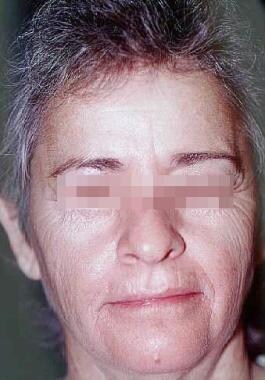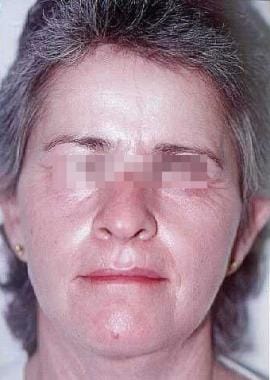Background
Lower eyelid aging results in prominent adipose tissue, skin redundancy, increased rhytids, and laxity.
The traditional technique includes a subciliary incision with removal of fat, skin, and hypertrophied orbicularis muscle and canthal tightening. This approach can result in ectropion, retraction, and canthal angle blunting in 5-20% of patients.
The transconjunctival approach allows for fat rearrangement, debulking, and arcus marginalis release, leading to improved eyelid contour. This approach does not address dermatochalasis, rhytids, or skin texture. The use of the carbon dioxide laser for resurfacing has been used successfully to reduce these findings.
The images below depict a patient who underwent combined upper and lower laser blepharoplasty, perioral and periorbital carbon dioxide laser resurfacing, SMAS facelift, and full-face blue peel.
Laser tissue resurfacing. Female patient with skin and muscle laxity, photoaging, and dermatochalasis.
Same patient as in image above underwent combined upper and lower laser blepharoplasty, perioral and periorbital carbon dioxide laser resurfacing, SMAS facelift, and full-face blue peel. This photograph was taken 6 months after the procedure.


